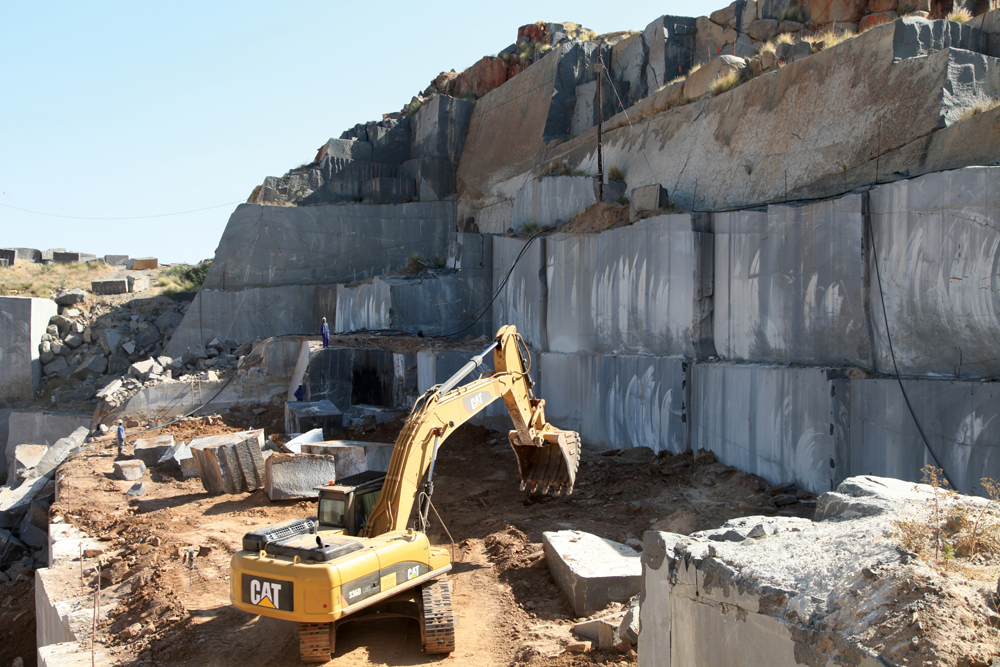Diving into of Granite Quarries in South Africa
Diving into of Granite Quarries in South Africa
Blog Article
Discovering the Rich History and Lasting Practices of Granite Quarrying
As we stand on the precipice of revealing the elaborate tapestry of granite quarrying, a trip through time reveals not just the physical act of removing rock but additionally the social and historical value woven right into the extremely material of this technique. From the ancient origins that laid the structure for modern quarrying strategies to the sustainable methods that are forming the future of this sector, each chisel mark on granite surface areas informs a story waiting to be discovered (granite quarries in south africa). The heritage of granite quarrying extends far beyond plain removal; it is a testament to human ingenuity, durability, and the long-lasting attraction of this marvelous rock
Ancient Origins of Granite Quarrying
Going back to old civilizations, the method of quarrying granite has actually been an integral part of human background and architectural innovation. The earliest proof of granite quarrying days back to ancient Egypt, where substantial pyramids and intricate sculptures were crafted from this resilient stone. The Egyptians used primitive tools to draw out granite blocks from quarries, showcasing the value of this product in their significant building and constructions.
Moving on in background, the Greeks additionally made substantial payments to the quarrying of granite. The Greeks made use of granite in numerous building wonders, such as holy places and sculptures, demonstrating their skill in shaping and carving this hardy stone. The Romans further refined the techniques of quarrying granite, using innovative devices like knives and hammers to remove and form granite for their famous structures.
Through the centuries, the practice of quarrying granite has progressed, with contemporary technologies enhancing performance while keeping the ageless charm of this natural rock - granite quarries in south africa. From old people to contemporary home builders, the tradition of granite quarrying remains to shape our globe
Development of Quarrying Methods
The evolution of quarrying techniques has been marked by a continual development towards better effectiveness and precision in removing granite. From the basic approaches utilized by our ancestors to the innovative innovations utilized in modern-day quarrying operations, the industry has actually undergone substantial developments. Early quarrying strategies entailed manual work with basic devices such as chisels, hammers, and wedges to remove granite blocks from the earth. As human beings advanced, strategies like fire-setting and primitive dynamites were presented to help with the removal process.
In more recent times, the arrival of machinery changed the quarrying market, allowing quicker removal rates and enhanced efficiency. Technologies such as diamond cord saws, high-pressure water jets, and pneumatic drills have ended up being common in contemporary quarries, permitting exact cutting and lowered waste. In addition, innovations in computer-controlled tools and 3D modeling have actually optimized quarrying operations, leading to minimal environmental effect and boosted sustainability methods. As the demand for granite remains to increase, the advancement of quarrying strategies continues to be essential to meeting market needs effectively and sustainably.
Social Relevance of Granite
Granite holds a profound social value across numerous human beings due to its long-lasting visibility in architectural masterpieces and prized monoliths. The cultural value of granite prolongs past its physical characteristics; it webpage personifies resilience, security, and eternity, making it a symbol of enduring traditions and traditions.

Sustainable Practices in Quarrying
Among the abundant history of granite quarrying and its social relevance lies an expanding emphasis on lasting methods within the industry. As ecological understanding and issues concerning source depletion have actually heightened worldwide, the quarrying field has actually increasingly welcomed sustainable approaches to lessen its effect on the setting and surrounding communities.

Additionally, recovery and rehab of quarry sites post-extraction are essential to sustainable practices. By restoring quarried locations to an all-natural or valuable state, such as developing wild animals habitats or leisure areas, quarriers can offset the environmental footprint of their procedures and add positively to the regional community.
Legacy of Granite Quarrying
With a historical background soaked in craftsmanship and industrial progression, what sustaining effect has granite quarrying left on the landscape of modern culture? The heritage of granite quarrying goes beyond simple extraction techniques; it has actually shaped architectural wonders, metropolitan landscapes, and cultural heritage worldwide. The sturdy nature of granite has made it a recommended choice for monoliths, buildings, and infrastructure, standing as a testimony to the skill and virtuosity of quarry employees across generations.
In addition, the economic impact of granite quarrying can not be ignored. The industry proceeds to offer employment possibilities and drive regional economies in areas where granite extraction is widespread. It has additionally spurred technical developments in quarrying techniques and devices, resulting in more effective and sustainable methods.
In terms of sustainability, the tradition of granite quarrying consists of efforts to reduce ecological impacts with recovery tasks and responsible resource monitoring. By visit this web-site stabilizing economic rate of interests with ecological stewardship, the sector strives to guarantee that future generations can remain to profit from this long-lasting natural deposit.
Final Thought

Report this page